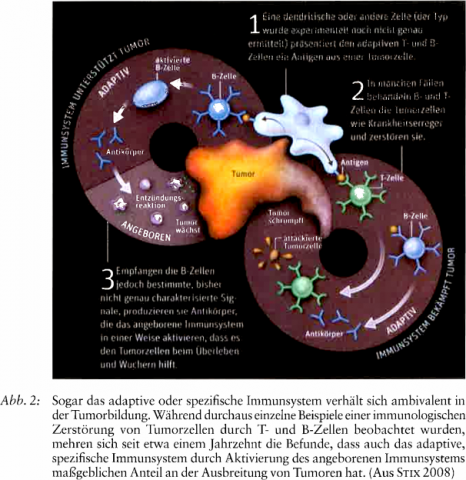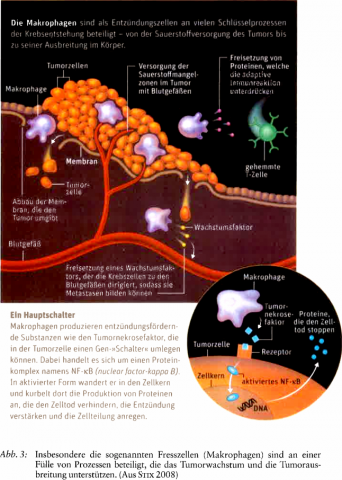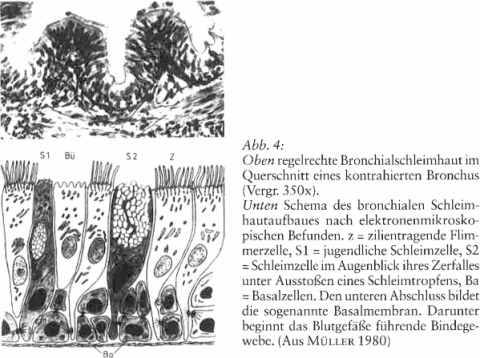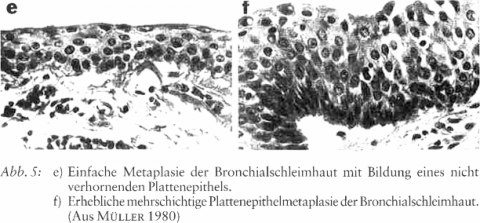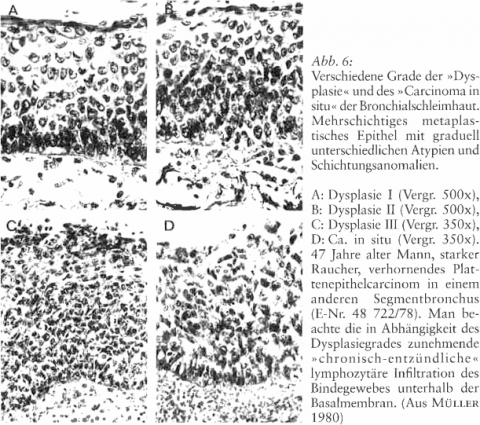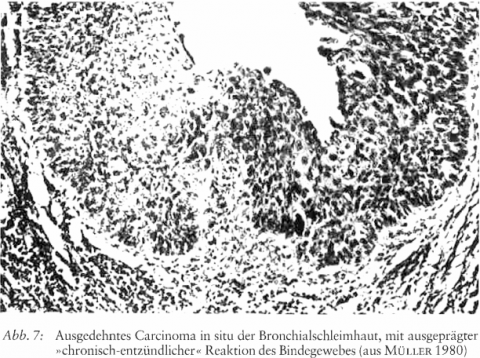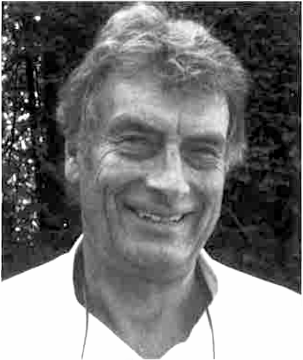Zur anthroposophischen Menschenkunde der Krebskrankheit
Export Article Citation as
- Download price : €6
Abstract:
An anthroposophical perspective on human cancer
In the eighties of the last century it was realised that cancer is more than just a formless mass of proliferating cells. Ian Folkman discovered that blood vessels from the apparently healthy surroundings of the tumour grow into it, without which an increase in the diameter of the tumour to more than 3-4 mm is impossible. Moreover, the metastasis of tumours was then understood as the result of this ‚tumour angiogenesis‘. In the course of only two decades this led to the development of a completely new class of cancer drugs, the so-called ‚tumour angiogenesis inhibitors‘. Even today these are more successful than all efforts hitherto to activate the immune system for tumour-defence, although knowledge of the immune system predates it by decades. After a further ten years, research has shown why this is: The immune system behaves ambivalently in relation to tumour formation in that it not only attacks tumours, but can also significantly support them. This article is concerned with this ambivalence and presents the consequcnces for mistletoe therapy and the biological understanding of tumour formation.
References
- ABEL, U. (1991): Common infections in the history of cancer patients and controls. Cancer Res. 117: 339-344
- ALBONICO, H. U. & al. (1998): Febrile infectious childhood diseases in the history of cancer patients and matched controls. Medical Hypotheses 51: 315-320
- AGGARWAL, B. A. & al. (2006): Inflammation and cancer: How hot is the link? Biochemical Pharmacology 72: 1605-1621
- BRETTSCHNEIDER, H. ( 1984): Zu Pathologie und Heilbedarf des menschlichen Blutorgans. In: Tycho de Brahe-Jahrbuch für Goetheanismus 1984, S. 111-199. Niefern
- BRETTSCHNEIDER, H. (1985): Der periphere Blutkreislauf als Strömungsorgan, in: Schad, W. (Hrsg.): Goetheanistische Naturwissenschaft. Band 4: Anthropologie, S. 207-239. Stuttgart
- BRETTSCHNEIDER, H. (1988): Krebstherapie und Metamorphose-ldee. In: Tycho de Brahe-Jahrbuch für Goetheanismus 1988, S. 40-109. Niefern
- BRETTSCHNEIDER, H. (1989): Stufen der Malignität. In Tycho de Brahe-Jahrbuch für Goetheanismus 1989, S. 181-224. Niefern
- BRETTSCHNEIDER, H. (1990): Zur embyonalen Hüllenbildung und Plazenta des Menschen. In Tycho de Brahe-Jahrbuch für Goetheanismus 1990, S. 206-283. Niefern
- BRETTSCHNEIDER, H. (1999): Unvollständige Integration der Embryonalhüllen bei den Säugetieren. In Tycho de Brahe-Jahrbuch für Goetheanismus 1999, S. 207-304. Niefern
- BRETTSCHNEIDER, H. (2002): Preface to Woernle, M.: The Embyonic Development of the Cardiovascular System. In: Holdrege, C. (Ed.), The Dynamic Heart, pp. 115-125. Fair Oaks
- ELLIOTT, J. C. (2002): Calcium phosphate biominerals. In: Kohn, M. J., Rakovan, J., Hughes, J. M. (Eds.), Phosphates: Geochemical, Geobiological, and Materials Importance, Reviews in Mineralogy and Geochemistry Vol. 48: 427-453. Washington
- FOLKMAN, J. (1986): Die Gefäßversorgung von Tumoren. In: Schirmacher, V. V. (Hrsg.), Krebs-Tumoren, Zellen, Gene. Heidelberg
- FORTLAGE, K. (1869): Acht psychologische Vorträge 1. Vortrag: Über die Natur der Seele. Jena
- HUTTER, M. (1981): Syntropie und Dystropie von Krankheiten. Frankfurt
- JOCHMANN, G. (1924): Lehrbuch der Infektionskrankheiten, 2. Aufl. Berlin
- KEGEL, B. (1997): Krankheitskonzepte und Selbstkonzepte von Patienten mit akuter Virushepatitis. Gießen
- KOEHLER‚ R. (1985): Starten und Strömen im Weltmeer. In: Endlich, B. (Hrsg.), Der Organismus der Erde, S. 87-106. Stuttgart
- LIN, W.-W., KARIN, M. (2007): A cytokine-mediated link between innate immunity, inflammation, and cancer. J. Clinical lnvestigation 117: 1175-1183
- LU, H. & al. (2006): Inflammation, a key event in cancer development. Mol. Cancer Res. 4(4): 221-233
- MÜLLER, K.-M. (1980): Krebsvorstadien der Bronchialschleimhaut. In: Ghom, G. (Hrsg.), Präneoplasien, S. 112-131. Stuttgart
- PHAN, G. O. & al. (2003): Cancer regression and autoimmunity induced by cytotoxic T Iymphocyte-associated antigen 4 blockade in patients with metastatic melanoma. Proc. Nat. Acad. Sci U.S.A. 100(14): 8372-8377
- PENTER, R. & al. (2002a): Die Fieberwirkung unter hochdosierter Gabe von Viscum-Präparaten bei der Mistelerstbehandlung, Teil I. Der Merkurstab 55(5): 330-349
- PENTER, R. & al. (2002b): Die Fieberwirkung unter hochdosierter Gabe von Viscum-Präparaten bei der Mistelerstbehandlung, Teil Il. Der Merkurstab 55(6): 430-440
- RESTIFO, N. P., ROSENBERG, S. A. (1999): Developing recombinant and synthetic vaccines for the treatment of melanoma. Curr. Opin. Oncol. 11(1): 50-57
- ROSENBERG, S. A., YANG, J. C., RESTIFO, N. P. (2004): Nat. Med. 10(9): 909-915
- ROSENBERG, S. A & al. (2005): Tumor progression can occur despite the induction of very high levels of self/tumor antigen-specific CD8+T cells in patients with melanoma
- SCHMIDT, R. F., LANG, F., THEWS, G. (2005 ): Physiologie des Menschen, 29. Aufl. Heidelberg
- SKINNER. H. C. W. (2005): Mineralogy of bone. In: Selinus, O. & al. (Eds.)‚ Essentials of Medical Geology. Impacts of the Natural Environment on Public Health, pp. 667-693. Amsterdam, Boston, Heidelberg
- STEINER, R. (1904): Theosophie. Einführung in übersinnliche Welterkenntnis und Menschenbestimmung (GA 9). Berlin
- STEINER, R. (1911): Die psychologischen Grundlagen und die erkenntnisstheorethische Stellung der Anthroposophie. Vortrag auf dem 4. Internationalen Kongress für Philosophie, Bologna. Heute enthalten in: Philosophie und Anthroposophie, Gesammelte Aufsätze 1904-1923 (GA 35), S. 111-144. Dornach 1984
- STEINER, R. ( 1917): Die physischen und die geistigen Abhängigkeiten der Menschen-Wesenheit. In: Von Seelenrätseln. Kap. IV, Abschnitt 6, S. 150—162, Berlin. Als GA 21 in 4 Aufl. Dornach 1976
- STEINER, R. (1920a): Geisteswissenschaft und Medizin (GA 312), 1. Auflage in dieser Zusammenstellung. Basel 1937
- STEINER, R. ( 1920b): Physiologisches-Therapeutisches auf der Grundlage der Geisteswissenschaft (GA 313), Vortr. v. 7. Okt., 1. Auflage in dieser Zusammenstellung. Dornach 1965
- STEINER, R. (1921): Geisteswissenschaftliche Gesichtspunkte zur Therapie (GA 313), 9. Vortrag, 18.4.1921. Dornach
- STEINER, R. (1922a): Das Sonnenmysterium und das Mysterium von Tod und Auferstehung (GA 211), 1. Auflage in dieser Zusammenstellung. Dornach 1963
- STEINER, R. (1922b): Physiologisches-Therapeutisches auf der Grundlage der Geisteswissenschaft (GA 314), Vortr. v. 27. Okt., 1. Auflage in dieser Zusammenstellung. Dornach 1941
- STEINER, R. (1923a): Anthroposophische Menschenerkenntnis und Medizin (GA 319), 1. Auflage in dieser Zusammenstellung. Vortr. v. 3 Sept. in London. Dornach 1971
- STEINER, R. (1923b): Heilmittelangaben Rudolf Steiners, Loseblattsammlung (Hrsg. H. Krüger im Auftrag der Medizinischen Sektion am Goetheanum, Dornach 1969), Abschnitt "Viscum", Blatt 4
- STEINER, R. (1923c): Der Munsch als Zusammenklang des schaffenden, bildenden und gestaltendenWeltenwortes (GA 230), 1., 10., 11. und 12. Vortrag. Dornach
- STEINER, R. (1923/24): Anthroposophische Menschenerkenntnis und Medizin (GA 319), 1. Auflage in dieser Zusammenstellung, Dornach 1971
- STEINER, R., WEGMAN, I. (1925): Grundlegendes für eine Erweiterung der Heilkunst (GA 27). Dornach
- STIX, G. (2008); Bösartige Entzündungen. Spektrum der Wissenschaft Heft 4: 50-57
- VISSER, K. E. DE., EICHTEN. A., COUSSENS, L. (2006): Paradoxical roles of the immune system during cancer. Nat. Rev. Cancer 6(1): 24-37
- WOERNLE‚ M. (1988): Über die Wirkung dreier Nachtschattengewächse im Mensche: Beladonna. Hyosciamus und Stramonium. In Tycho de Brahe-Jahrbuch für Goetheanismus 1988, S. 140-164. Niefern


